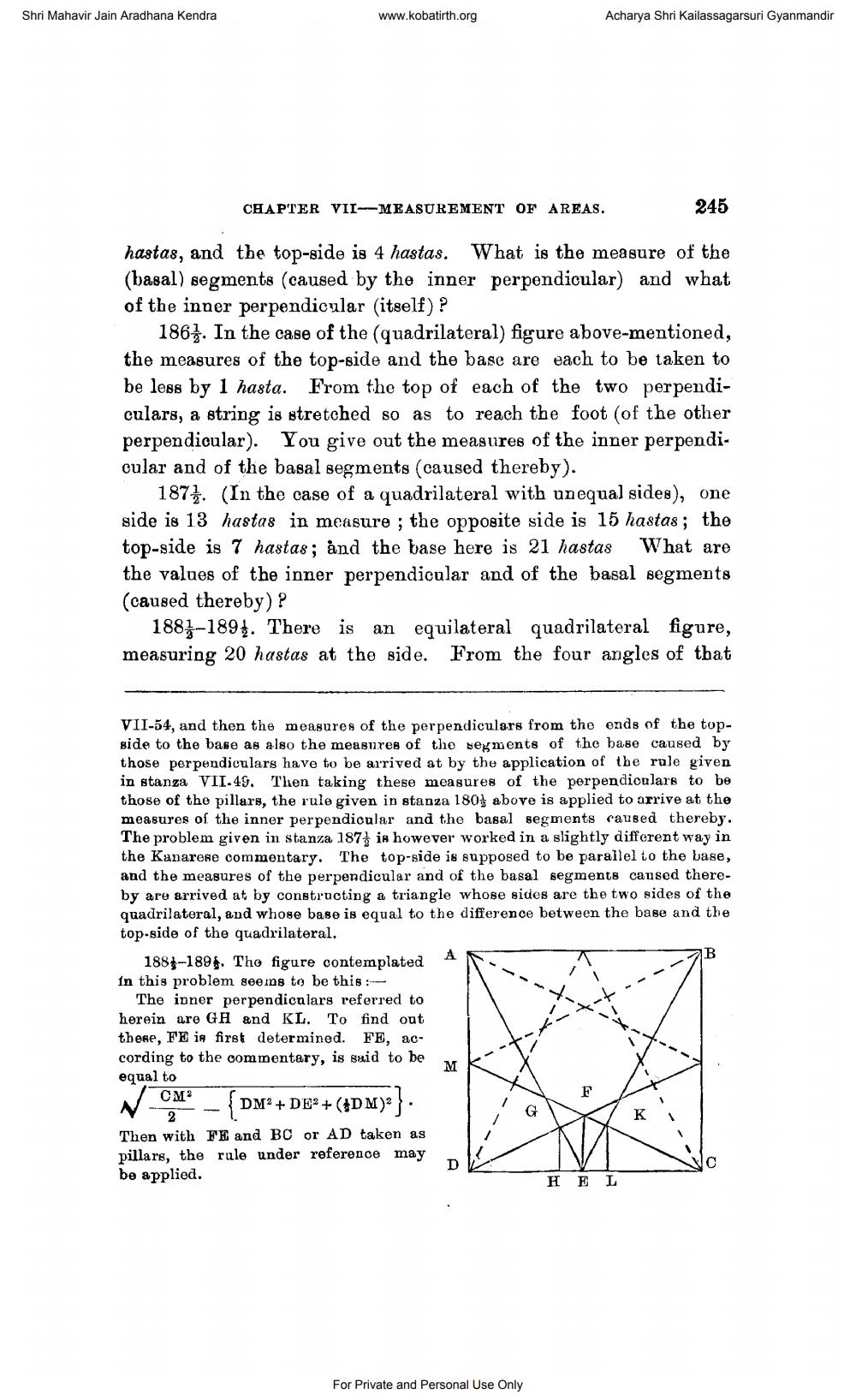________________
Shri Mahavir Jain Aradhana Kendra
www.kobatirth.org
Acharya Shri Kailassagarsuri Gyanmandir
CHAPTER VII-MEASUREMENT OF AREAS.
245
hastas, and the top-side is 4 hastas. What is the measure of the (basal) segments (caused by the inner perpendicular) and what of the inner perpendicular (itself) ?
1861. In the case of the (quadrilateral) figure above-mentioned, the measures of the top-side and the base are each to be taken to be less by 1 hasta. From the top of each of the two perpendiculars, a string is stretched so as to reach the foot of the other perpendicular). You give out the measures of the inner perpendicular and of the basal segments (caused thereby).
187}. (In the case of a quadrilateral with unequal sides), one side is 13 hastas in measure, the opposite side is 15 hastas; the top-side is 7 hastas ; ånd the base here is 21 hastas What are the values of the inner perpendicular and of the basal segments (caused thereby)?
1883–1891. There is an equilateral quadrilateral figure, measuring 20 hastas at the side. From the four angles of that
VII-54, and then the measures of the perpendiculars from the ends of the topside to the base as also the measures of the segments of the babe caused by those perpendiculars have to be arrived at by the application of the rule given in stanza VII.49. Then taking these measures of the perpendiculars to be those of the pillars, the rule given in stanza 180 above is applied to arrive at the measures of the inner perpendicular and the basal segments caused thereby. The problem given in stanza 187% is however worked in a slightly different way in the Kanarere commentary. The top-side is supposed to be parallel to the base, and the measures of the perpendicular and of the basal segments caused thereby are arrived at by constructing a triangle whose sides are the two sides of the quadrilateral, and whose base is equal to the difference between the base and the top-side of the quadrilateral. 1885-1894. The figure contemplated A
ав in this problem seems to be this:
The inner perpendiculars referred to herein are GH and KL. To find out there, FE in first determined. FE, according to the commentary, is suid to be equal to VCMT N 2 - DM2 + DE2 + (HDM).
XIKI Then with FE and BC or AD taken as pillars, the rule under reference may be applied.
HEL
For Private and Personal Use Only




